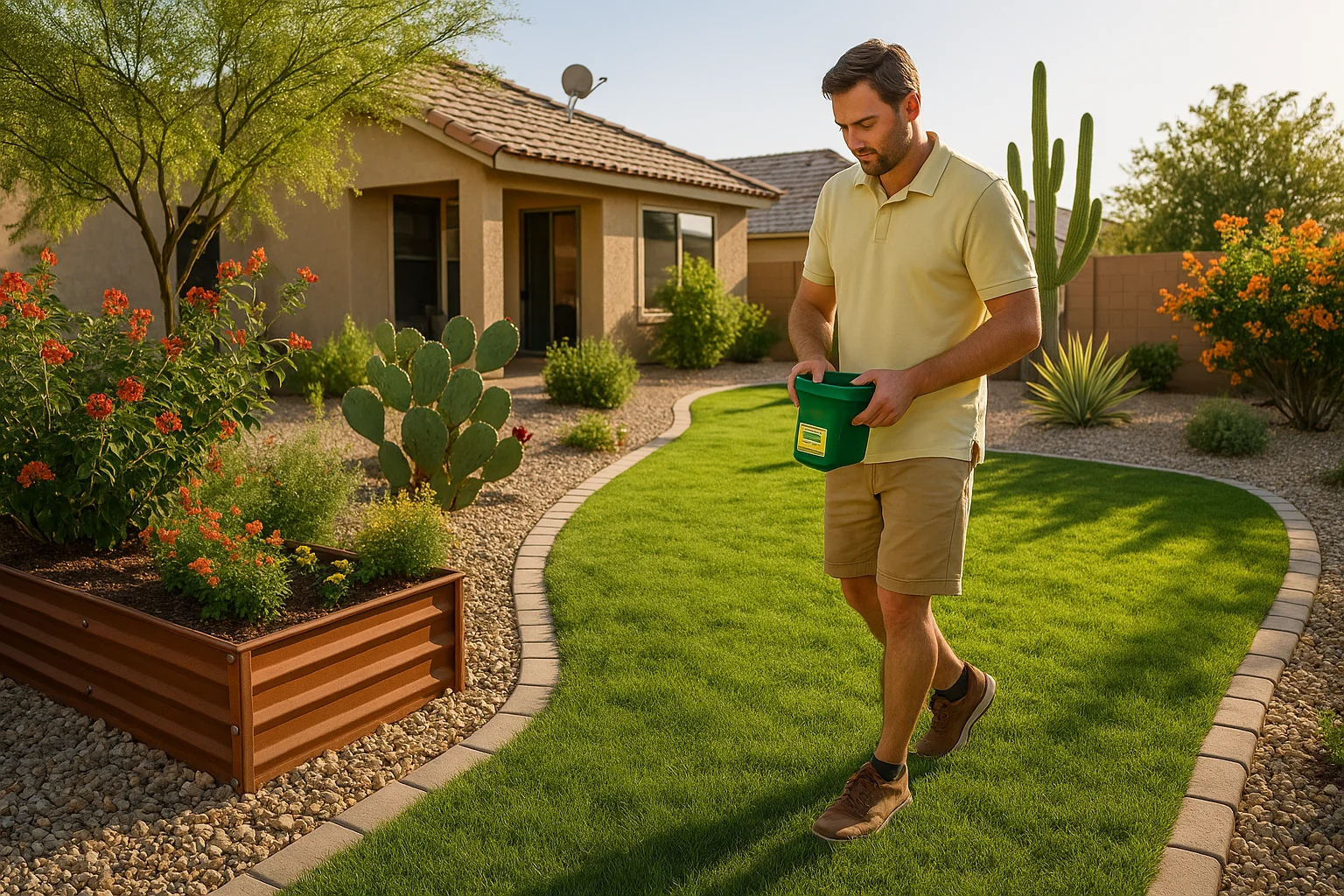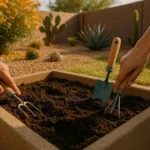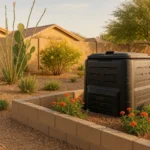As a proud Gilbert homeowner, you know just how important it is to keep your lawn looking its best all year round. One question that often comes up, especially during the hot Arizona summer months, is whether or not to fertilize. This article aims to shed light on this topic, providing you with the information you need to make the best decision for your lawn.
Understanding the Basics of Fertilization
First things first, let’s understand what fertilizing entails. Fertilizers are substances that are added to your lawn to promote the growth of healthy, green grass. They contain essential nutrients like Nitrogen, Phosphorus, and Potassium, which are vital for the growth and health of your lawn. However, knowing when and how to apply these nutrients is crucial to get the desired results.
In Gilbert and the surrounding Southeast Valley, the type of grass most commonly found is Bermuda grass. This tropical grass species thrives in warm temperatures and is quite resilient in dealing with the summer heat. However, it still requires proper care and maintenance, including regular watering and timely fertilization.
Summer Fertilization: Yes or No?
Should you fertilize your Gilbert lawn in summer? The answer isn’t a simple yes or no. The decision to fertilize in the summer depends on several factors, including the type of grass, the condition of the lawn, and the specific weather conditions of the season.
For Bermuda grass, the prime growing season is from late spring to early summer. This is when you should apply a high-nitrogen fertilizer to support its growth. However, as we move into the intense heat of the mid-summer, the growth of Bermuda grass slows down. During this time, it’s often best to hold off on heavy fertilizing. Over-fertilizing can cause excessive growth, which can lead to other problems like disease and pests.
Proper Summer Fertilization Techniques
If your lawn is in need of a boost during the summer months, there are a few things you can do to ensure the fertilizer you apply is beneficial and not harmful. First, you should use a slow-release fertilizer. This type of fertilizer releases nutrients slowly over time, providing a steady supply of nutrients without promoting excessive growth.
Second, make sure to water your lawn thoroughly after applying the fertilizer. This helps to dissolve the fertilizer and carry it down into the soil where the roots can absorb it. However, be mindful of your watering schedule. As per the Gilbert watering guide, Bermuda grass needs about 1 to 1.25 inches of water per week during the summer months.
Other Summer Lawn Care Tips

Beyond fertilization, there are other important steps you can take to maintain your lawn’s health during the Gilbert summer. Regular mowing, for instance, is essential. Bermuda grass should be kept at a height of about 1 to 1.5 inches. Remember to keep your mower blades sharp to prevent tearing the grass, which can lead to browning and disease.
Additionally, it’s important to keep an eye out for signs of pests or disease. If you notice any brown patches or areas where the grass seems to be thinning, it may be time to consult with a lawn care professional. They can help diagnose the issue and recommend the best course of action.
Conclusion
Ultimately, the decision to fertilize your lawn in the summer depends on a variety of factors. It’s important to understand your lawn’s specific needs and adjust your care practices accordingly. Remember, the goal is to maintain a healthy, green lawn that can withstand the Gilbert summer heat. With proper care and maintenance, you can achieve just that.
And of course, if you need more help with your lawn care needs, don’t hesitate to consult with a local Gilbert lawn care professional. They can provide you with more personalized advice and guidance based on your lawn’s specific needs.






